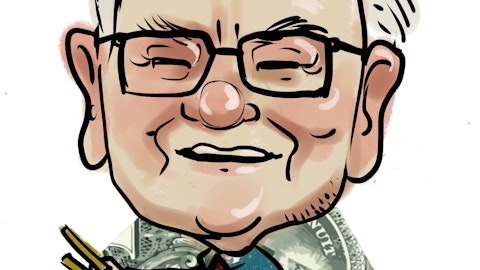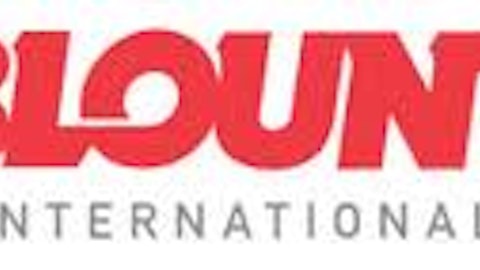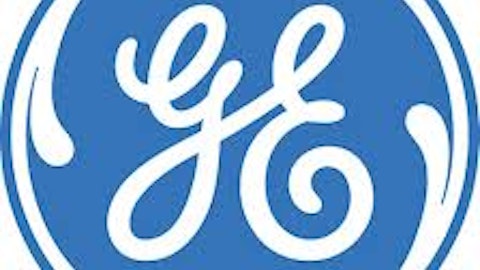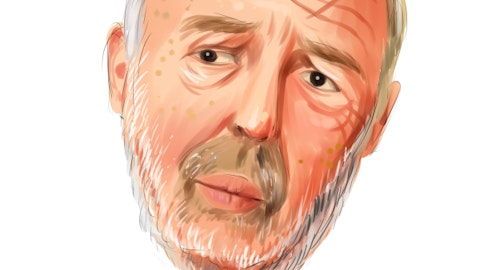Caterpillar Inc. (NYSE:CAT), the world’s largest producer of heavy equipment, showed showed strong growth last quarter, posting EPS that was up almost 50% from the prior quarter. Company sales were driven by new equipment purchases in both North America and Asia, with sales up 9% and 8% quarter over quarter, respectively. The company’s stock was up as high as 2% on the news, but our question is how should you trade the other major infrastructure-related companies based on CAT’s revised outlook.
CAT lowed its sales guidance to $66 billion, from $68-$70 billion, citing continued weak global economic conditions. CAT believes that the world economy will only grow by 2.5% in 2012, which would be the weakest growth since 2009. The company also expects the first half of 2013 to be weaker than the second half of the year.
The company also trimmed its outlook all the way out to 2015, again, citing weaker than expected global growth—CAT still trades around 6x 2015 EPS. As a result, the company has lowered production across many of its segments, and is now reconsidering investment spending. This includes possible cutbacks on its plans to expand into mining, as China, the largest user of coal and metals, has seen slowing economic expansion.
Despite all the negative sentiment provided by the company itself, Barclays Capital reiterated its buy recommendation, with a price target of $114, compared to the stock’s current price of $85.50. However, overall sentiment by investment firms is mixed, with Jefferies maintaining a hold and RBC Capital downgrading the company. Yet, fund interest in 2Q was positive, where Jim Simons and Ray Dalio loved CAT quite significantly. Steven Cohen and D.E. Shaw were also bullish, upping their stakes by over 500% and 900%, respectively.
CAT has long been considered a bellwether for broader economic growth. The company’s ties to infrastructure make it one of the select companies that we look toward when judging how global growth will unfold, which in turn has vast impacts on other infrastructure-related companies, including Deere & Company (NYSE:DE), Cummins Inc. (NYSE:CMI), Joy Global Inc. (NYSE:JOY) and Manitowoc Company, Inc. (NYSE:MTW).
Deere produces construction and earthmoving equipment, as well as farm equipment. Being the world’s largest farm machine producer, a poor economic backdrop outlined by CAT not only hurts Deere, but drought conditions are also placing downward pressure on the company. The company missed last quarter estimates by almost 15% and saw investment firm Janney Montgomery Scott LLC cut its outlook last month. Janney’s analyst cited aggressive product rollouts as negatively impacting margins. Much like the 2Q fund interest for CAT, Deere got many votes of confidence, namely from Steven Cohen and Ken Griffin, with Griffin increasing his 1Q stake over 400%.
The diesel engine manufacturer, Cummins, is on our list of six cheap large-cap dividend stocks. The company has seen truck engine sales slow in North America, but has positive growth initiatives in high GDP growth countries, such as India and Brazil. Driving market share gains in these countries will not only be truck engines, but infrastructure-related power generating equipment. The company recently lowered 2012 revenue guidance, but at the same time got reaffirmation from S&P, who maintained their strong buy recommendations. The company caught Jim Simons’s interest in 2Q; he is now the top fund owner, but Cummins also saw a number of insider sales last month.
Joy Global is a manufacturer of mining equipment used in regions throughout the world to extract coal, copper, iron ore, oil sands, and other minerals. CAT’s poor outlook for mining and reconsiderations to make additional investments in the sector are not positive signs for Joy. Revenues are only expected to be up 2% in 2013, with uncertain domestic coal consumption adding to global growth concerns. One positive for Joy is the expected rise in natural gas prices, which may cause some energy providers to switch back to coal consumption. Now, Joy also appears to have some stout competition entering this market, namely General Electric, but could GE be interested in simply buying Joy?
Manitowoc, the major crane company, has the strongest revenue growth prospects, with sales expected to be up 14% in 2013. The backlog in the company’s crane division was up 16% last quarter and is the highest it has been post-recession. Yet, Manitowoc’s debt load puts it at a disadvantage to its peers. The company continues to face challenges, carrying a debt to equity ratio of 3.75, compared to CAT’s 1.9. All of these companies trade in a tight P/E range, from 9x to 11x earnings, except Manitowoc, which trades at 24x. Additionally, all the other companies pay a dividend that yields greater than 1%, while Manitowoc’s dividend yields roughly half that mark.
Despite the fact that Manitowoc has some of the best growth prospects among the companies listed, we believe that its stock trades at a valuation too rich for us to invest. Despite the positive fund sentiment for both CAT and Deere, we believe the earthmoving and farm equipment market has changed rapidly as growth has continued to remain stagnant, and see continued downside potential for both companies. Infrastructure-related stocks still face too much uncertainty with global economic growth, and we think that Cummins may perform the best with its focus on emerging markets.






